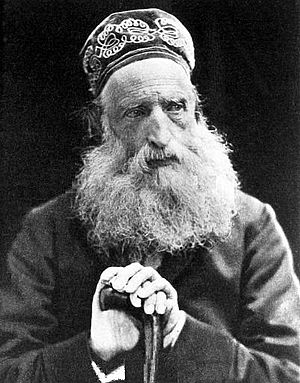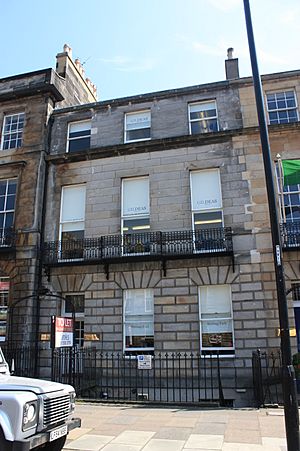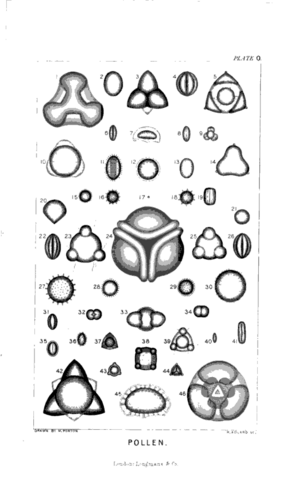Mungo Ponton facts for kids
Mungo Ponton (born November 20, 1801 – died August 3, 1880) was a Scottish inventor. In 1839, he discovered a special way to make permanent photographs. This method used a chemical called potassium dichromate. He was also a member of important scientific groups, like the Royal Society of Edinburgh.
Early Life and Family
Mungo Ponton was born in Balgreen, a part of west Edinburgh, Scotland. His father, John Ponton, was a farmer. Mungo was named after the famous explorer Mungo Park.
In 1815, Mungo began training to become a lawyer. He worked in Edinburgh's New Town. By 1825, he became a "Writer to the Signet," which is a type of lawyer in Scotland. Later, he started his own law firm with a partner.
In 1830, he married Helen Scott Campbell. They had seven children together. The family lived in a large house at 30 Melville Street in Edinburgh. From 1838, he also worked as a law officer for the National Bank of Scotland.
His first wife, Helen, passed away in 1842. The next year, he married Margaret Ponton, and they had one son. They continued to live at 30 Melville Street. Around 1845, Mungo moved to Bristol, England. He went there because the climate was milder, which was better for his health. In 1871, he married his third wife, Jean McLean. Mungo Ponton died in Bristol in 1880.
Amazing Discoveries
Mungo Ponton is best known for his work in photography. But he made other important discoveries too.
In 1834, he became a member of the Royal Society of Edinburgh. This was a big honor for scientists. In 1838, he won a silver medal for helping to improve the electrical telegraph. This was a very early way to send messages over long distances.
His most famous discovery happened in 1839. He was working with an early photography method. During his experiments, he found that a chemical called potassium dichromate reacted to light. This reaction could make images permanent. He shared his findings with the Scottish Society of Arts and published them.
Mungo Ponton did not patent his discovery. This meant others could use his idea freely. Many inventors, including Henry Fox Talbot, used his findings. Ponton's discovery was very important. It became the basis for new photography methods. These included "carbon print" and "gum bichromate" processes. His work also helped develop methods used in the printing industry.
Mungo continued his work in photography. In 1845, he won another silver medal. This was for a process he created to measure temperature changes using photographic paper. That same year, he also improved another early photo process called the calotype. His changes helped make photos with shorter exposure times.
External Sources
- Mungo Ponton, The Online Books Page, University of Pennsylvania




